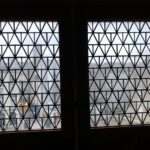Introduction
The coolest thing about traveling: you always learn new stuff. Not necessarily about modeling but also about the cities and countries that you visit. I had to do work in the nice city of Nantes in France for 3 days. Nantes is about 1000km through the air and a lot more in a car or by train so we took the plane.
When flying, you have the choice when you’re on location, hire a car or use public transportation.
I’ve been to Nantes before and I remembered that they had Uber there and that the traffic is not really “my style” so I decided to do that. The Uber driver told us a lot about Nantes and one of its famous inhabitants: Jules Verne. There is even a museum there. Also there is a warship museum in the harbor where the film “??” was recorded. Not that we had time for that… but nice to know for the next visit.
What Diagram shall I use?
As long as you use UML to document your software, it does not really matter which Diagram you use for what. It does not even matter if you use the UML correctly. Or even worse, you don’t know while you cannot check if you use the UML correctly. At least in Rhapsody you can generate code to check if your model does what you specified. But there is enough left to do wrong… you can only generate code from Class-, Object-, Package-, State-machine- and activity Diagrams.
Admitted, the UML is not clear on when to use what diagram. The argument for not having that is that it is a programming language. “C does not tell you when to you which statement either”. Correct but if someone else does something in a certain way, that does not force me to do the same….
So the UML lacks a “process” that divides your development in stages with deliverables and rules on what to use when and how.
V-Model
The V-model is still used widely in software development. As it should be because it is a proven way to develop software. The exact way it is used changed over the last decades. From a waterfall model where each stage was finished completely before starting the next to the agile process we use now that makes the V-model more a system where you store your development artifacts.
Process
There are numerous processes that describe how to develop software. Some of them are more common and some of them specify UML or even Rhapsody specific, like IBM’s Harmony. Older processes are still used like RUP from rational, Ropes from Bruce and many more like Automotive Spice (a-spice)
You don’t need to try and follow these processes, you can use them to describe your own process. How thorough you do that is mostly depending on the safety level of your software. Railway systems or cars or planes have huge processes that require really thoroughly described steps.
Requirements
When you don’t know what to do, you cannot do it. So you first have to be clear on what it is that you are building. This is a difficult part for experienced software developers… We (Yes I am a software developer…) are very solution oriented. If somebody describes a problem to us we immediately start to think solution. Write down the real requirements of your product. Concentrate on “What do I need” not on “How do I do that”. You can use a Requirements Management Tool like DOORS (Next) of Polarion or even Word or Excel (Not good for linking and traceability but will work)
May be you are lucky and you will receive the requirements from your stakeholder, like in the Automotive industry.
Then import the requirements in your UML model. In Rhapsody you can use either the Gateway of the Willert RequirementXChanger. These tools will create a package with your requirements. They can even synchronize them if the requirements change and mark the changed requirements accordingly so you can do impact analysis on changes.
What diagram should you use for requirements? That is a good question since the UML does not know a requirement diagram. There are a couple of possibilities in Rhapsody, you can stereotype an OMD (Object Model Diagram) as a new term “Requirement Diagram”. Very elegant way, Rhapsody creates a category for new Terms so that you see them as a folder in the browser. Another possibility is to not show the requirements on diagrams but to create a table where you have the requirements on one axis and your linked model elements on the other. Have a dependency with “trace” stereotype as cell item and you can link requirements very easily. Also possible is to drag your requirements in the diagrams where you have the model elements that you want to link. This will make your diagrams messy but there is a solution for that too! You can apply filters (actually queries) to your diagrams and blend out certain elements.
Analysis
The next step is to analyze your requirements and create diagrams where you extract behavior.
The Diagram of choice here is a Sequence Diagram (At least that is my opinion) The nice thing about Sequence Diagrams is:
- Even non-techies understand SD’s
- They are easy to draw
- They can be used for tests!
You just start drawing the first diagram by treating your system as a black-box, defining what output you expect for certain input. You then create new SD’s by refining the first one in horizontal way (splitting up the system in sub-systems, then sub-sub-systems until you are at Class level) and vertical way (split the functions ins sub-functions and so on…)
You can use Class Diagrams (Or Object Model Diagrams) to already start drawing your system architecture that you find out when drawing the SD’s.
Some use Activity Diagrams or even State-charts for this part. There is nothing against that, I just don’t like it. Activity Diagrams are more or less OK but I think State-charts are just too complicated and distract your mind too much during analysing your system. Also if you need to speak with non-technical people about the exact requirements of the system, State-charts are much less “natural” to use.
Design/Implementation
Here you use the same diagrams as in the Analysis and now it is time for state-machines. Together with the state-machines you start creating tests for all your sequence diagrams, in that way you can immediately test if what you have created is correct. And even better: you can do so whenever you have made changes.
This allows you to do Analysis/Design/Implementation in a sort of spiral model. Just keep adding small pieces of functionality, keep starting automated tests (using Test Conductor) and you always have a working system.
Some pictures from Nantes
That’s it for today, happy modeling with Rhapsody!
Walter van der Heiden (wvdheiden@willert.de)















Leave a Reply